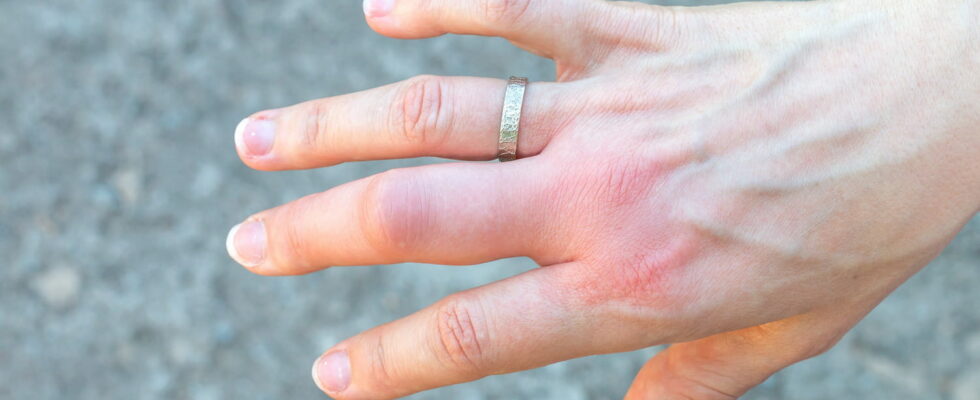Wasp stings are painful. The skin is red, hot and swollen. Quick, it stings!
Insect bites are often painful and among them, the wasp sting is particularly feared. To help relieve the pain and avoid complications, you must immediately remove jewelry and rings from the stung area, remove the stinger or stinger if it is stuck in the skin and disinfect the sting with an antiseptic or soap and water. It is also recommended to soothe the wasp sting to put an ice pack or cold water. The anesthetic effect is transient and mild. The relief will be short-lived, since the water does not provide any active ingredients but it feels good.
Baking soda also reduces the inflammation of the wasp sting, the swelling and redness that occurs after the wasp sting. Our naturopath Manon Borderie recommends applying baking soda as a poultice. To do this, simply mix a teaspoon of powder with a teaspoon of water. Vinegar can also be effective on wasp stings. Whether it is alcohol vinegar or cider vinegar, it is the very acidic pH of the vinegar that reduces the swelling of the skin. “You can soak a cotton ball or a clean cloth in 12° alcohol vinegar and apply it directly to the bite, advises our specialist. The cool side of the vinegar relieves the feeling of heat.”
These remedies provide relief, but another is even more recommended by our naturopath. And it is towards essential oils that we must turn… by choosing precisely that of lavender aspic.In case of a wasp sting, lavender aspic acts quickly and effectively on the pain and the reduction of edema”, explains Manon Borderie. Spike lavender is one of the best known and most powerful essential oils, as its properties are so broad and incredibly effective. It is an essential oil that is essential to have in your emergency kit. “Spike lavender is calming, soothing, and analgesic. When used externally, it is an exceptional skin healer.” continues the specialist. And it is easy to use.
“Its packaging in a small bottle allows it to be carried everywhere, even during walks outside.” For adults, it is applied pure, using a cotton swab. For children, it is better to mix a drop of essential oil with a drop of neutral vegetable oil, such as sweet almond oil. You can also use a culinary vegetable oil, such as olive oil. Warning: lavender aspic is not recommended for children under 7 years old, pregnant and breastfeeding women..
